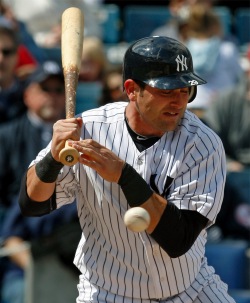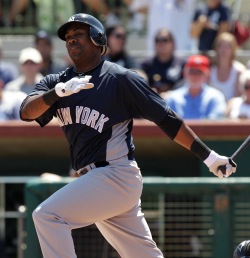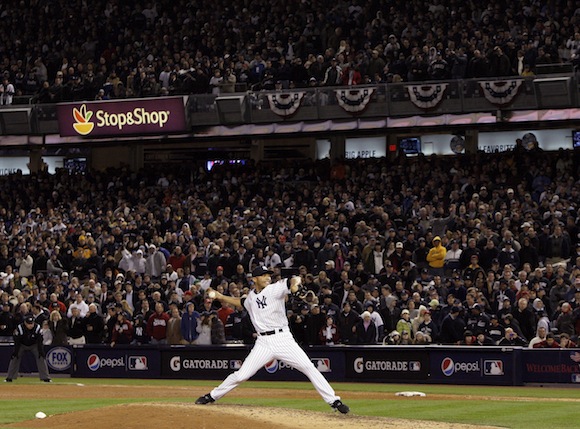Over the last month or so, the three of us have broken down and previewed just about every aspect of the 2010 Yankees. It was quite the undertaking but we’re very pleased about how it all turned out. Here’s a link to each post, in case you missed any or just want to go back and relive the magic…
- March 4th: Will Posada continue to defy age?
- March 5th: Robo-Tex
- March 8th: Will the real Robinson Cano please stand up?
- March 9th: Early Season Alex
- March 10th: Can Jeter keep it up?
- March 11th: Sacrificing offense for defense in left (Brett Gardner & Randy Winn)
- March 12th: Banking on another rebound candidate (Curtis Granderson)
- March 15th: Can Swish do it again?
- March 16th: Designated table-setter (Nick Johnson)
- March 17th: Burnett and Sabathia could be even better in ’10
- March 18th: Strength from the back end (Javy Vazquez & Andy Pettitte)
- March 19th: Whose future is now? (Joba Chamberlain & Phil Hughes)
- March 22nd: Breaking Down Aceves
- March 23rd: Set up for success (Damaso Marte, David Robertson & Chan Ho Park)
- March 24th: Greatness in the 9th
- March 25th: The Four Benchman
- March 26th: Managing when the pieces fit
- March 29th: Help from within (farm system)
- March 30th: The Front Office
- March 31st: Settling into the new digs
You can always just search for 2010 Season Preview in the sidebar to find any and all of those posts. Hope you enjoyed them.
Anyway, here’s the open thread for the evening. The Knicks and suddenly hot Nets (three wins in their last four games!) are both in action, but go ahead and talk about whatever you want. Just don’t be a dick.


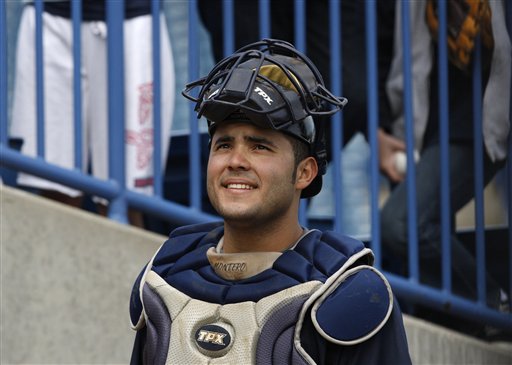
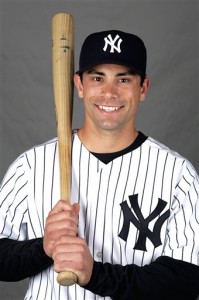
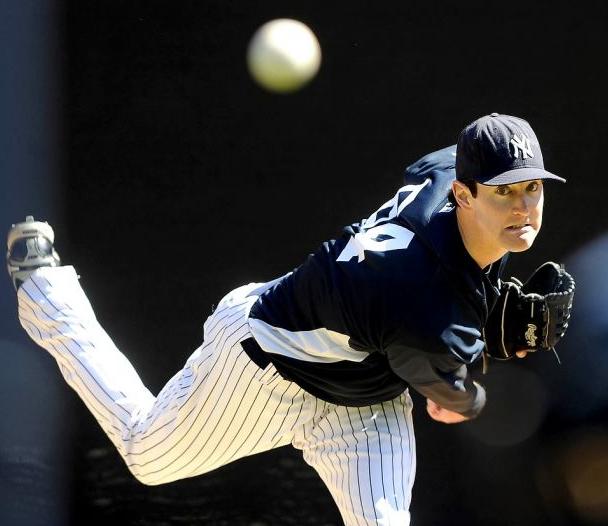 Of course, when it comes to farm system this year, all eyes will again be on 2007 first rounder Andrew Brackman (right), who disappointed in 2009 to say the least. The now 24-year-old posted a 4.66 FIP in Low-A Charleston, walking close to six and a half batters for every nine innings pitched, and his stuff was a far cry from what it was in college. The silver lining was that he continued to miss bats (8.69 K/9) and showed improved control and arm strength in a late season stint as a reliever, which he was able to carry over into Instructional League and again into Spring Training. The Yankees will bump Brackman up to High-A Tampa in part because his big league contract will force him to stick in the Majors for good by 2013, and they’re looking for him to really step up and grab the reigns in a farm system devoid of star power beyond it’s top prospect.
Of course, when it comes to farm system this year, all eyes will again be on 2007 first rounder Andrew Brackman (right), who disappointed in 2009 to say the least. The now 24-year-old posted a 4.66 FIP in Low-A Charleston, walking close to six and a half batters for every nine innings pitched, and his stuff was a far cry from what it was in college. The silver lining was that he continued to miss bats (8.69 K/9) and showed improved control and arm strength in a late season stint as a reliever, which he was able to carry over into Instructional League and again into Spring Training. The Yankees will bump Brackman up to High-A Tampa in part because his big league contract will force him to stick in the Majors for good by 2013, and they’re looking for him to really step up and grab the reigns in a farm system devoid of star power beyond it’s top prospect.
